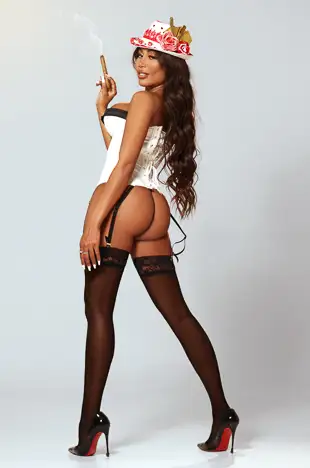East Dulwich is a district of South London, England in the London Borough of Southwark. It forms the eastern one third of Dulwich, with the Dulwich Wood area, Dulwich Village and West Dulwich to its South and West making up the remaining two thirds. The South London suburb dates back to the nineteenth century when the land was sold by Alleyn's College and redeveloped with the help of Sir Charles Barry. It is a residential area which has undergone gentrification in recent years. It has a shopping area along Lordship Lane (Dulwich) which, as well as many independent shops, has a selection of restaurants and a greengrocer specialising in organic produce. On Fridays and Saturdays there is a small market on North Cross Road with antiques, crafts and specialist food stalls. Some of the pubs in the area have been converted to gastropubs, providing residents with many more places to eat and drink. East Dulwich railway station is located on Grove Vale. It is not only further east than North Dulwich Station (on the same line) but also further north.
History
Saxon Dulwich
967 - Edgar the Peaceful granted Dilwihs to a thane named Earl Aelfheah. Dilwihs meant 'meadow where the dill grew'.
Medieval Dulwich
1066 - King William I of England is owner of Dulwich, taking the land from King Harold II of England
Lordship Lane was the boundary of Dulwich Manor with Friern Manor.
1340 - The hamlet of Est Dilewissh was sold to John Leverich by William Mabuhs
Tudor Dulwich
1538 - Dulwich no longer property of Bermondsey Abbey with Dissolution.
1544 - Dulwich granted to goldsmith Thomas Calton for £609 by Henry VIII of England.
Stuart Dulwich
1605 - Estate sold for £4,900 to Edward Alleyn by Sir Francis Calton
Georgian Dulwich
1805 (+1814) - Dulwich Common enclosed.
1826 - East Dulwich Chapel built at start of Lordship Lane opposite Goose Green.
Victorian Dulwich
1851 - Dulwich's population: 1,632.
1863 - London, Chatham and Dover Railway built.
1865 - St John's Church built amidst green fields.
1868 - East Dulwich railway station opened as Champion Hill Station.
1868 - Old village green is bought for public use.
1871-1881 - 5,000 houses built in East Dulwich.
1872 - St John's & St Clements school moved to Northcross Road.
1874 - St Peter's Church built.
1877 - Emmanuel Congregational Church opened on Barry Road.
1883 - Heber Road School.
1885 - Horse-drawn trams arrived in East Dulwich
1887 - Dulwich Hospital opened.
1890 - Dulwich Park opened. Dulwich Grove Congregational Church opened on Melbourne Grove.
1892 - Dulwich Public Baths opened on East Dulwich Road.
1893 - Dulwich Fire Station opened on Lordship Lane (closed 1947 after war damage).
{{cite web
|url=http://www.lfbphotos.com/assetbank-lfb/action/viewAsset;jsessionid=883CFB0D0D0F8B4EF6C97FA6517B3CEE?id=258&index=27&total=119&collection=Stations&categoryId=8&categoryTypeId=1
|title=Dulwich Fire Station c.1900. Built 1892.|publisher=London Fire Brigade
|year=1900
|accessdate=2009-05-02
}}
1897 - Dulwich Library opened.
{{cite web
|url=http://southwark.gov.uk/YourServices/LibrariesSection/
|title=Welcome to Southwark libraries
|publisher=Southwark Council
|accessdate=2009-05-03
}}
Modern Dulwich
1900 - Part of the Metropolitan Borough of Camberwell. Grove Vale School opened.
1901 - Dulwich's Population: 10,247
1902 - Imperial Hall opened in Grove Vale.
1906 - Horse-drawn trams were replaced by electrical ones. The route ran Dog Kennel Hill, Lordship Lane and East Dulwich Road.
1912 - Dulwich Hamlet FC moved to Dog Kennel Hill. Aquarius Golf Club opened.
1923 - Imperial Hall became Pavilion. Grove Tavern rebuilt.
1931 - New Dulwich Hamlet FC stadium opened.
1938 - East Dulwich Odeon opened.
1940s - World War II: the Blitz and the V1 & V-2 rocket flying bombs caused widespread damage to East Dulwich.
1952 - End of electric trams.
1965 - Became part of new London Borough of Southwark.
1972 - East Dulwich Odeon closed. Later became London House.
1977 - East Dulwich Police Station opened.
1990s - Gentrification of East Dulwich.
1994 - St John's & St Clements school moved to Adys Road.
1998 - Commemorative blue plaque added to 36 Forest Hill Road, birthplace of Boris Karloff (William Henry Pratt)
2003 - London House (old East Dulwich Odeon) demolished. East Dulwich is a district of South London, England in the London Borough of Southwark. It forms the eastern one third of Dulwich, with the Dulwich Wood area, Dulwich Village and West Dulwich to its South and West making up the remaining two thirds. The South London suburb dates back to the nineteenth century when the land was sold by Alleyn's College and redeveloped with the help of Sir Charles Barry. It is a residential area which has undergone gentrification in recent years. It has a shopping area along Lordship Lane (Dulwich) which, as well as many independent shops, has a selection of restaurants and a greengrocer specialising in organic produce. On Fridays and Saturdays there is a small market on North Cross Road with antiques, crafts and specialist food stalls. Some of the pubs in the area have been converted to gastropubs, providing residents with many more places to eat and drink. East Dulwich railway station is located on Grove Vale. It is not only further east than North Dulwich Station (on the same line) but also further north.
Geography
Dulwich Plough
One area of East Dulwich is called Dulwich Plough.http://www.geograph.org.uk/photo/2018876 This was named after a pub, "The Plough" which had been there since 1830. The pub was taken over by Bass Taverns pub chain and changed its name in 1996 to the ''Goose and Granite''. Despite the efforts of a "Save Dulwich Plough" campaign the new name was kept for almost ten years. The name reverted to The Plough in 2005.
Dulwich Library, which opened on 24 November 1897 is nearby.
549 Lordship Lane - the "Concrete House"
One of the most architecture interesting buildings in the area is at 549 Lordship Lane. The so-called "Concrete House" is a derelict grade II listed building and is an example of 19th-century concrete house. It is believed that it is the only surviving example in England.
{{cite web |url=http://www.ideal-homes.org.uk/southwark/east-dulwich/549-lordship-lane-1930.htm |title=549 Lordship Lane, East Dulwich, Southwark, c.1930
|publisher=Ideal Homes |accessdate=2009-05-03 }}
The Concrete House was built in 1873 by Charles Drake of the Patent Concrete Building Company. In 1867 the builder had patented the use of iron panels for shuttering rather than timber.
It is listed on the English Heritage Heritage at Risk Register register.
{{cite web |url=http://risk.english-heritage.org.uk/2010.aspx?id=1354&rt=0&pn=1&st=a&ctype=all&crit=lordship+lane Lordship Lane |title=Heritage at Risk Register|publisher=English Heritage
|accessdate=2009-05-03}} East Dulwich is a district of South London, England in the London Borough of Southwark. It forms the eastern one third of Dulwich, with the Dulwich Wood area, Dulwich Village and West Dulwich to its South and West making up the remaining two thirds. The South London suburb dates back to the nineteenth century when the land was sold by Alleyn's College and redeveloped with the help of Sir Charles Barry. It is a residential area which has undergone gentrification in recent years. It has a shopping area along Lordship Lane (Dulwich) which, as well as many independent shops, has a selection of restaurants and a greengrocer specialising in organic produce. On Fridays and Saturdays there is a small market on North Cross Road with antiques, crafts and specialist food stalls. Some of the pubs in the area have been converted to gastropubs, providing residents with many more places to eat and drink. East Dulwich railway station is located on Grove Vale. It is not only further east than North Dulwich Station (on the same line) but also further north.
Sport and leisure
East Dulwich is also home to Dulwich Hamlet F.C. and Fisher F.C., two Non-League football clubs who ground share at Champion Hill. East Dulwich is a district of South London, England in the London Borough of Southwark. It forms the eastern one third of Dulwich, with the Dulwich Wood area, Dulwich Village and West Dulwich to its South and West making up the remaining two thirds. The South London suburb dates back to the nineteenth century when the land was sold by Alleyn's College and redeveloped with the help of Sir Charles Barry. It is a residential area which has undergone gentrification in recent years. It has a shopping area along Lordship Lane (Dulwich) which, as well as many independent shops, has a selection of restaurants and a greengrocer specialising in organic produce. On Fridays and Saturdays there is a small market on North Cross Road with antiques, crafts and specialist food stalls. Some of the pubs in the area have been converted to gastropubs, providing residents with many more places to eat and drink. East Dulwich railway station is located on Grove Vale. It is not only further east than North Dulwich Station (on the same line) but also further north.
See also
* List of people from Southwark East Dulwich is a district of South London, England in the London Borough of Southwark. It forms the eastern one third of Dulwich, with the Dulwich Wood area, Dulwich Village and West Dulwich to its South and West making up the remaining two thirds. The South London suburb dates back to the nineteenth century when the land was sold by Alleyn's College and redeveloped with the help of Sir Charles Barry. It is a residential area which has undergone gentrification in recent years. It has a shopping area along Lordship Lane (Dulwich) which, as well as many independent shops, has a selection of restaurants and a greengrocer specialising in organic produce. On Fridays and Saturdays there is a small market on North Cross Road with antiques, crafts and specialist food stalls. Some of the pubs in the area have been converted to gastropubs, providing residents with many more places to eat and drink. East Dulwich railway station is located on Grove Vale. It is not only further east than North Dulwich Station (on the same line) but also further north.
References
;Notes
;Bibliography
*{{cite book
|last=Boast
|first=Mary
|title=The Story of Dulwich
|publisher=London Borough of Southwark Local Studies Library
|year=1990
|pages=36 pages
|isbn=0-905849-09-4}}
*{{cite book
|last=Beasley
|first=John D
|title=East Dulwich: an illustrated alphabetical guide
|publisher=South Riding Press
|year=1998
|pages=152 pages
|isbn=1-874401-08-X}}
*{{cite book
|last=Green
|first=Brian
|title=Victorian and Edwardian Dulwich
|publisher=Quotes Ltd
|year=1988
|pages=140 pages
|isbn=0-86023-432-0}}
*, page 220. East Dulwich is a district of South London, England in the London Borough of Southwark. It forms the eastern one third of Dulwich, with the Dulwich Wood area, Dulwich Village and West Dulwich to its South and West making up the remaining two thirds. The South London suburb dates back to the nineteenth century when the land was sold by Alleyn's College and redeveloped with the help of Sir Charles Barry. It is a residential area which has undergone gentrification in recent years. It has a shopping area along Lordship Lane (Dulwich) which, as well as many independent shops, has a selection of restaurants and a greengrocer specialising in organic produce. On Fridays and Saturdays there is a small market on North Cross Road with antiques, crafts and specialist food stalls. Some of the pubs in the area have been converted to gastropubs, providing residents with many more places to eat and drink. East Dulwich railway station is located on Grove Vale. It is not only further east than North Dulwich Station (on the same line) but also further north.
External links




























































































































































































